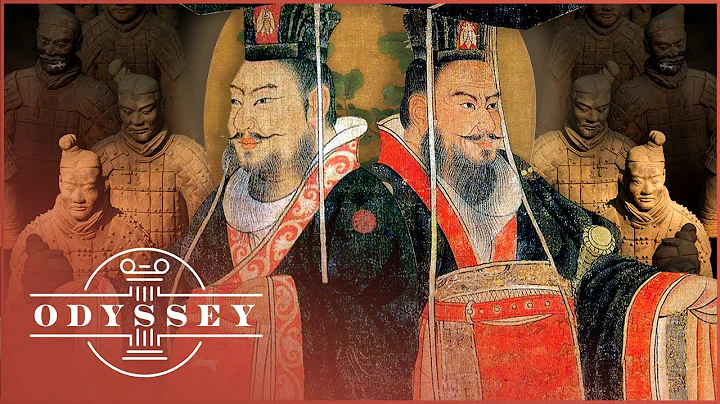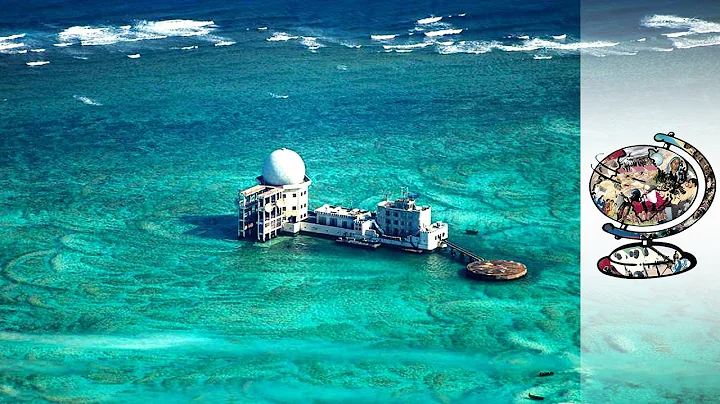China has a very long history of having water troops. In ancient times, such a team was often called the Navy. Naval forces have been around since the Spring and Autumn Period. During the Three Kingdoms period, the famous Battle of Chibi was a contest between naval forces. For a long period of time, the navy was mainly based on inland rivers. By the Ming and Qing Dynasties, the navy played an increasingly important role in naval battles. Zheng Chenggong's Northern Expedition to resist the Qing Dynasty and his eastward expedition to Taiwan also relied on a powerful navy. Zheng Chenggong During his eastern expedition to Taiwan, he took advantage of the rising water level in the waterway during high tide to enter the Taijiang River from Luermen. After landing, he cut off the connection between the two major castles of Chikan City and Taiwan City, and then conquered Taiwan Island, which the Dutch had occupied for many years. .
However, China began to have a truly modern navy in the late Qing Dynasty. During the First Opium War, Lin Zexu , Wei Yuan and others put forward suggestions to transform the navy, which was the forerunner of the creation of China's modern navy. After the Second Opium War, the coastal defense crisis intensified. Zuo Zongtang and others proposed the idea of vigorously developing the navy. During the Westernization Movement, China's modern navy came into being, and its representative was the Beiyang Navy .
Western military rank symbols were used for the first time
In 1866, the Qing government established the Fujian Shipping Bureau in Fuzhou. In 1875, it established the Southern Beiyang Minister to accelerate the construction of a modern fleet, and also opened schools to train naval professional officers . After that, Beiyang Minister Li Hongzhang created China's only Royal Navy - Beiyang Navy. Beiyang Navy is also known as Beiyang Navy and Beiyang Fleet. On December 17, 1888, the Beiyang Navy was officially formed at Liugong Island, Weihaiwei, Shandong Province. It had previously ordered a number of warships, including the dome-armored cruisers Zhiyuan, Jingyuan and the armored cruiser Jingyuan. , Laiyuan number, etc. The strength of the Beiyang Navy was ranked first in Asia and ninth in the world at that time.
The top commander of the Beiyang Navy is the Navy Admiral Ding Ruchang, and the Navy's chief instructor is the British Langweili. There are General Soldiers under him (right-wing General Soldiers Liu Buchan, left-wing General Soldiers Lin Taizen ), with several deputy generals (Chinese Army Lieutenant General and Admiral Deng Shichang, Chinese Army Lieutenant General Fang Boqian, Chinese Army Right Deputy General Ye Zugui, Left Wing Zuoying Deputy General Lin Yongsheng, etc.), in addition to Ding Ruchang, the commander-in-chief, The deputy generals are all commanders of the ship. For example, Liu Buchan is the commander of the Dingyuan and Deng Shichang is the commander of the Zhiyuan.
In the military system of the Qing Dynasty, the official rank of Guan Dai was not high. The battalion commander in charge of a battalion in the army was also called Guan Dai and was a mid-level officer. In the navy, the captain (captain) is also called the captain. The navy is a technical branch and has a higher level than the army. Moreover, the leadership of the Navy originally had other official ranks, such as commander-in-chief, deputy general, etc. Liu Buchan was the commanding officer of the Dingyuan and was at the rank of commander-in-chief. Deng Shichang was the commanding officer of the Zhiyuan. He also had lieutenants with the rank of admiral. They were all senior generals in the navy.
The Beiyang Navy began preparations in the first year of Guangxu's reign (1875). In the summer of the eighth year of Guangxu's reign in the Qing Dynasty (1882), in order to distinguish its rank, grandeur, and integrate with the navies of the great powers, Ding Ruchang, then commander of the Beiyang Navy, organized personnel, referring to the British For naval uniforms, China’s first navy uniform regulations were formulated: “Illustrated Description of Beiyang Navy Uniforms”, which can be said to be China’s first modern military uniform regulations.
According to many materials, there is a professional vocabulary for the early naval uniforms of the Beiyang Navy: 1888 style. Because the Beiyang Navy was officially established in 1888, the officers and soldiers put on brand new military uniforms, so it was called the 1888 style. However, some information also mentions the 1882 style. In fact, these two titles refer to the same set of military uniforms. Because the military uniform of the Beiyang Navy was made from the "Illustrated Description of the Uniforms of the Beiyang Navy", which was formulated in 1882, the 1888 style is also called the 1882 style.
The military uniforms of the Beiyang Navy are divided into three categories: official uniforms (i.e. officers), foreign gun uniforms and sailor uniforms (i.e. soldiers). Each category is divided into spring, autumn (winter) and summer. Officers have separate formal uniforms.
The design of the military uniforms of the Beiyang Navy refers to the design concept of Western military uniforms, but the style is still Chinese style, using a double-breasted design.
Officer uniforms are in azurite, which is navy blue.Threads are used in spring and autumn, comfortable yarn is used in summer, and heavy cold-proof woolen is used in winter. Military boots are traditional thin-soled combat boots. The style top is a mandarin jacket with 6-inch wide cuffs and a tight waist. The cuffs, collar, placket, hem, etc. are decorated with traditional borders and cloud patterns. It is made of black satin in summer and black velvet in other seasons. Officers must wear a belt around their waists and carry a command knife.
It is worth mentioning that Western military rank symbols are added to the cuffs of the Beiyang Navy uniforms, which is an innovative design in traditional Chinese military uniforms. Traditional Chinese military uniforms use patterns, colors, and wear to distinguish official ranks, and there is no concept of military ranks. The Beiyang Navy is different from the traditional navy. It is a new branch under modern concepts and is greatly influenced by Western navies. Therefore, symbols representing military ranks were added to the cuffs of the uniforms of the Beiyang Navy. These symbols include commander, ship owner, driver, engineer, gunner, sail and cable, military doctor, copywriter and other positions and departments. Different symbols are used to distinguish positions and officers. level. For example, the symbols of the gunnery officer are Fang Tian's painted halberd and red tassel gun, the symbols of the medical officer are Ganoderma lucidum, longevity peach and bat, the symbols of the sailing and cable officer are Chinese knots, and the symbols of the copywriting officer are simply calligraphy brush and rice paper, which are clear at a glance.
When the Beiyang Navy visited Japan in 1891, the "Tokyo Asahi Shimbun" reported on the image of Chinese naval officers and soldiers at that time: "Officers still wore silk and satin clothing, but the cuffs were decorated with gold stripes like foreigners...especially the sailors' clothing... He is almost no different from an ordinary person. Only the name of the ship is sewn on his straw hat and jacket, which shows that he is a sailor." It has no brim. The officer's cap is made of black felt, with a black border inlaid on the edge, and the top of the cap is inlaid with beads according to the official's rank. After the Sino-Japanese War, the Beiyang Navy was rebuilt. At this time, the military uniforms became more Westernized, and the military caps also adopted large-brimmed hats, which were very different from the traditional naval uniforms.
In addition, the Beiyang Navy has a large team of non-commissioned officers, who are between officers and soldiers. The uniform of a non-commissioned officer is similar to that of an officer, except that there is no identification mark in the cuff cloud, and it uses armbands.
Senior generals have unique uniforms
In a handed down photo of Zhiyuan ship pipe belt Deng Shichang with other naval officers and foreign advisers (see Figure 1), it can be seen that the military uniform Deng Shichang was wearing at that time was 1888 style, which was the style when the Beiyang Navy was first established. However, in a photo of Deng Shichang that people often saw later (see Figure 2), the hat Deng Shichang wore was not a round hat. This kind of hat is similar to the official hat of civil and military officials in the Qing Dynasty, that is, there are flower feathers hats, but they are not exactly the same (the official hats of civil and military officials are in the shape of a bamboo hat, but the one worn by Deng Shichang is not in the shape of a bamboo hat).

A group photo of officers of the Zhiyuan ship. Standing in the middle is Deng Shichang, wearing a round hat (Picture 1)

Deng Shichang wearing an official hat (Picture 2)
Moreover, A photo of Admiral Ding Ruchang of the Beiyang Navy (see Picture 3) ), the same is true. He did not wear the military uniform of the Beiyang Navy, but still wore the patchwork uniform and hat-shaped hat.

Admiral Ding Ruchang of the Beiyang Navy, wearing a formal dress and official hat (Picture 3)
As senior generals of the Beiyang Navy, why are Ding Ruchang and Deng Shichang wearing different uniforms from the Beiyang Navy uniforms? This is related to the military system of the Qing Dynasty at that time.
In the middle of the crown of the official hat of the Qing Dynasty, there is a hat weft made of red silk tape. There are top beads on the hat weft. The colors are red, blue, white, gold, etc., and they are worn according to their grades. Under the top bead, another two-inch long feather tube is installed to place the feather branches. This is what people often call "wearing a flower feather on the top". "Dingdai" refers to the various gemstones inlaid on the top of official crowns and hats; "Hua Ling" refers to the feather ornaments attached to the crowns and hats.
The "top wear" and "flower feathers" on the official hats of officials in the Qing Dynasty are one of the symbols that distinguish officials. However, in the design of military uniforms of the Beiyang Navy, there are only officer uniforms for the first-level officers, and there are no admirals, commanders, or deputy generals. The military uniforms of higher-ranking generals. The uniforms of higher-ranking generals can be distinguished from those of ordinary officers only by some decoration on the dress.
Specifically, in the uniforms of the Beiyang Navy, most officers wear round beanies because they are suitable for work on ships. The bamboo hat-shaped official hats of the Qing Dynasty were not suitable for use on ships. Such hats easily blocked the line of sight, and were extremely inconvenient when using telescopes and operating artillery machines on ships. However, the round beanie hat itself has no distinction in rank. Taking into account the etiquette activities, the Qing court also equipped these naval officers with military uniforms. The matching official hats were also different from the typical bamboo hat style "wearing flower feathers on top" in the Qing Dynasty. Instead, the bamboo hat style hat was changed into a brimless warm hat. , this kind of hat can still have a crown and feathers. Therefore, there is the way of wearing it in the old photos of Deng Shichang: the top is a navy uniform (indicating the naval branch), and the hat is an improved official hat (indicating the official rank, with flower quills).
Ding Ruchang's military uniform is even more so. Ding Ruchang was from Lujiang, Anhui, and belonged to the Huai Army. He was a subordinate of Li Hongzhang. In the seventh year of Tongzhi (1868), Ding Ruchang was awarded the title of Commander-in-Chief of the Army and the title of Admiral. When Li Hongzhang established the Beiyang Navy, Ding Ruchang was appointed admiral of the Beiyang Navy. Ding Ruchang was the commander-in-chief of the army when he was in the army. He had a higher rank and corresponding regulations on his clothing. However, after he became the admiral of the Beiyang Navy, he did not have the corresponding navy uniform to wear.
According to the military orders of the Beiyang Navy, the admiral has the power to command the entire army. All Beiyang warships, regardless of distance, are under his control. The admiral is only under the control of the Beiyang minister. Therefore, for the Beiyang Navy, Ding Ruchang is the "Number One" and has absolute authority. However, as the admiral of the Beiyang Navy, Ding Ruchang's uniform is the same as that of a mid-level officer, except for the logo on the cuffs. In order to highlight Ding Ruchang's majesty, there is a combination of two costumes of Ding Ruchang in the photo: one is the double-breasted official uniform and official hat in the traditional official uniform of the Qing Dynasty; the other is the azure military uniform of the Beiyang Navy.
In Nanjing, there is a piece of armor worn by Ding Ruchang. It is a replica of the shirt worn by Ding Ruchang. The original was donated to the China Military Museum by Ding Ruchang's descendants. The original was seriously damaged, but after three years of research, it was successfully copied by the Nanjing Yunjin Research Institute in 1987.

Ding Ruchang's war robe restored by Nanjing Yunjin Research Institute
The war robe consists of 13 parts including top, war skirt, left and right shoulder pads, armpit guards, pan guards, lion body and fish tail, as well as gold shoulder pads and silver helmet. head. There are more than 2,000 rivets on the shirt. The original rivets are made of solid gold, and the replicas are replaced with copper nails. The role of rivets is not only decoration, but also has the function of slowing down the resistance of bullets and swords and guns, and is also used to fix the armor underneath the rivets. The whole set of armor is glittering with gold. Among them, the lion's body and the fish's tail respectively represent the identity of the military attaché: the navy branch. The flying fish pattern is a kind of python suit worn by dignitaries among the official uniforms of the Qing Dynasty. Based on these elements, it can be seen that this shirt is a ceremonial armor, Ding Ruchang's military uniform, rather than an actual combat armor.
After reconstruction, military uniforms were completely westernized.
After the defeat of the Sino-Japanese War of 1894-1894, the Qing government signed the "Treaty of Shimonoseki" with Japan, which was humiliating and humiliating, and ceded territory and paid compensation. This has caused China's national power to decline, its coastal defenses to collapse, and its navy to be in dire straits. And how can a country without coastal defense protect its vast coastline? For this reason, knowledgeable people wrote to the court calling for the restoration of the navy. Zhang Zhidong, one of the four famous officials in the late Qing Dynasty, put forward the idea of "urgent management of the navy." Although the Qing court ministers had disputes over whether to restore the navy or slow it down, facing the increasingly passive situation after the Sino-Japanese War of 1894-1894, the Qing government had to put the issue of restoring the navy on its agenda. Under the initiative of the reformers, Emperor Guangxu attached great importance to the reconstruction of the navy.

After the reconstruction of the Beiyang Navy, the soldiers wore very modern military uniforms
On April 17, 1899, the Qing government re-appointed the former Beiyang Navy generals and appointed Ye Zugui as the commander of the Beiyang Navy, Sa Zhenbing as the gang commander , responsible for rectifying the Beiyang Navy. In the following years, a naval school was opened to train naval talents. In 1906, the Qing government formally proposed a plan to revitalize the navy. On July 15, 1909, the Qing government appointed Zaixun and Sa Zhenbing as ministers of the navy, and established the naval affairs office directly under the imperial court.
In the first year of Xuantong (1909), the Qing government formally established naval officer ranks in accordance with international practice. The military ranks were based on the new army's third-level and nine-level military rank system. From top to bottom, they were divided into: Navy Chief Commander and Navy Vice Chief. Commander-in-Chief of the Navy, Vice-President of the Navy (equivalent to an admiral, lieutenant general, and rear admiral), Commander-in-Chief of the Navy, Deputy Commander-in-Chief of the Navy, Co-Commissioner of the Navy (equivalent to a colonel, lieutenant colonel, and major), Chief Naval Academy, and Deputy Naval Academy , Naval Associate Military Academy (equivalent to captain, lieutenant, second lieutenant), and an additional level of officer equivalent to warrant officer.
also reformed the navy uniforms. In the early days of the establishment of the Beiyang Navy, the Chinese military uniforms with Western elements were abandoned and Western clothing characteristics were completely adopted. Officer uniforms are divided into three types: regular uniforms (all white and all black with stand-up collar), blue double-row and stand-up collar gowns. The traditional Chinese one-word plate buttons are no longer used and replaced by Western-style copper buttons. Officer uniforms are divided into all-black uniforms and all-white uniforms according to spring, autumn, winter and summer. This is also the first time China has used white military uniforms.
The large dress is shaped like a tuxedo, with double-breasted buttons, wide gold lines on the cuffs to indicate rank, and epaulettes with gold lines. The hat is a Napoleonic three-cornered hat. The large dress is smooth and solemn, showing a kind of majesty. Different markings are used on the cuffs of the dress to indicate the officer's rank: a thick dragon-shaped bar for the commander-in-chief, with three, two, and a golden dragon pattern on the top according to the three levels of chief, deputy, and associate respectively; for the chief, deputy, and associate officers, respectively There are three, two and one golden dragon figures on them; military academy officers are respectively decorated with three, two and one silver dragon figures according to the three levels of chief, deputy and associate officers.
Sailors' uniforms are also in Western style, with a "V" collar on the front of the neck, a square shawl, and two white lines embroidered on the cuffs. Military trousers are tube-shaped. Soldier uniforms are also divided into seasons. They are dark blue in spring, autumn and winter, and white in summer. The shawls are dark blue regardless of the season. Sailors' military caps are divided into two types: winter hats and summer hats. The winter hat is a big top hat with no brim. There is a streamer on the back end of the hat (the use of streamers is scientific and can measure the wind direction). On the wall of the hat, "Qing Dynasty" is embroidered with gold thread. ××warship" words. The summer hat is a large, flat-topped yellow straw hat with blue edges. The straw hat is tied with a strip of cloth with the ship's name written on it.
The reconstruction of the Beiyang Navy uniform is in line with the international navy, which is undoubtedly a collision of concepts. The transformation of the Beiyang Navy military uniforms completely broke away from the Chinese style of traditional Chinese military uniforms. The changes in their costumes also show that policymakers are trying to bring Western naval military systems, management methods and other supporting systems into China. This is also the need of the changing times.
However, the brand-new military uniforms are just an external item of military uniforms and are not the core combat effectiveness and competitiveness of the military. If its essence cannot keep up with the development of the times, everything will be a fantasy. At the end of 1910, the Naval Department of the Army Ministry of the Qing government was upgraded to the Navy Department. Zai Xun and Sa Zhenbing also purchased a number of warships and planned to build a new military port. These measures were not small, but in the face of the terminally ill Manchu Qing Dynasty, , they did not play a role in turning the tide.
Addendum
The movie "The Sino-Japanese War " has errors in the military uniform design
When it comes to the Sino-Japanese War of 1894-1899, especially when Deng Shichang is mentioned, many people will think of the movie "The Sino-Japanese War of 1894-1899". This color feature film was produced by Changchun Film Studio in 1962 and released in early 1963. The director was Lin Nong, starring Li Moran (playing Deng Shichang), Puke (playing Ding Ruchang), Pang Xueqin ( Play kingdom into ) etc. The Deng Shichang portrayed in the movie is deeply rooted in the hearts of the people and has become one of the classic images on the Chinese screen.
It is worth mentioning that this movie is relatively rigorous in the treatment of character costumes. It is restored according to the original appearance of the Beiyang military uniforms in history. Except for some individual discrepancies, in general, you can still get a glimpse of the military uniforms of the Beiyang Navy.
The story of "Sino-Japanese War" took place in 1894. The military uniforms worn by the officers and soldiers of the Beiyang Navy were of the 1888 style. At that time, there were two types of sailor caps. They mainly wore black cloth turbans in spring, autumn and winter, and square-top straw hats in summer. In this regard, the sailor played by Pang Xueqin in "The Sino-Japanese War" has a certain historical basis for wearing a headscarf. However, in the movie, a round number plate is added to the chest of the sailor, which is inconsistent with historical facts. It is grafting the army's soldier uniform onto the sailor uniform.
In "Sino-Japanese War", the treatment of Deng Shichang wearing a hat during the naval battle is inconsistent with historical facts. As mentioned earlier, in order to facilitate movement in the narrow cabin, the hats of the officers and soldiers of the Beiyang Navy are small round hats with no brim. For the sake of visual effects, the movie allows Deng Shichang to wear a crown, a flower feather, a white battle suit, and a cape during the naval battle. When the Zhiyuan rides the wind and waves, the sea breeze lifts the cape, which is spectacular and arouses the emotions of the audience. However, although Deng Shichang's clothing in the movie is not a fiction, it does not match the scene at that time. What Deng Shichang wears in the photo is a military uniform. It is mainly used for celebrations and ceremonial activities. In actual war, it is not only convenient but also a target for the enemy. According to the situation of the battle, Deng Shichang should have worn a navy blue mandarin-style military uniform and a melon-pipe hat. Just like what was worn in the handed down photos of Deng Shichang posing with the officers and foreign advisers of the Zhiyuan ship, that was the real attire worn by the Beiyang Navy in naval battles.
The stripes embroidered on Deng Shichang's cuffs in "Sino-Japanese War" are not correct. This is because the stripes on the foreign consultant uniforms were transplanted to Deng Shichang's military uniforms, because the cuffs of the Beiyang Navy uniforms were embroidered with different symbols and patterns for different positions. In the movie, there are horizontal stripes on the cuffs of the officers' uniforms, which is also inconsistent with historical facts. This pattern did not exist during the Battle of Dadonggou (also known as the Battle of the Yellow Sea) in 1894. It was created when the Beiyang Navy was rebuilt after the Sino-Japanese War of 1894. elements used.
Source: Beijing Evening News · Reading Author: Huang Qiang
Process Editor: Hong Yuanyuan





















